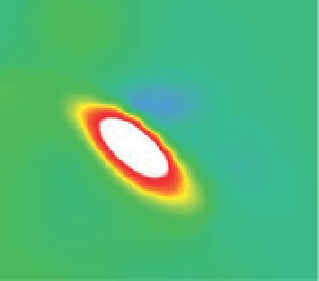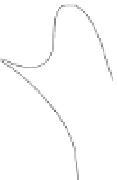Geoscience Reference
In-Depth Information
a)
e)
Anomaly maximum > 1800 nT
Anomaly maximum > 8000 nT
b)
f)
Anomaly maximum > 1800 nT
Anomaly maximum > 8000 nT
c)
g)
Anomaly maximum > 2900 nT
Anomaly maximum > 8000 nT
Figure 2.12
Aeromagnetic data from the Marmora Fe
deposit. The gridded, imaged and contoured data were
created from various subsets of the full dataset to
demonstrate the effects of survey line spacing and position
on anomaly resolution. The contour interval is variable.
(a)
d)
h)
(d) Line spacing is 1,600 m, with the lines progressively
laterally shifted 400 m in each case. (e)
-
(h) Line spacing
progressively decreased by 400 m, with the central line
optimally located directly over the deposit: (e) 1,600 m,
(f) 1,200 m, (g) 800 m, (h) 400 m. Note the spectacular
improvement in every aspect of the anomaly, i.e. its
amplitude, shape, gradients and trend direction, with
optimally positioned lines and decreasing line spacing.
TMI
-
Anomaly maximum > 8000 nT
Anomaly maximum > 8000 nT
4000
0 1
Kilometre
TMI
(nT)
Survey lines
-
500
a range of station and line intervals (
Fig. 2.10d
)
. Here a
small area has been surveyed with greater detail, as would
be required to characterise a target (see
Section 2.6.1
).
Multiple surveys of differing speci
An uneven spatial distribution of samples can lead to
aliasing (see
Section 2.6.1
)
.
Figure 2.10
shows several survey
con
gurations with uneven sampling. In these cases the
degree of aliasing will vary with location and, in line-based
con
gurations, with survey line orientation. The smaller
along-line
cations and extent are
a common occurrence and can provide useful information
for designing subsequent surveys.
sampling interval
allows
short-wavelength












































































































































Search WWH ::

Custom Search